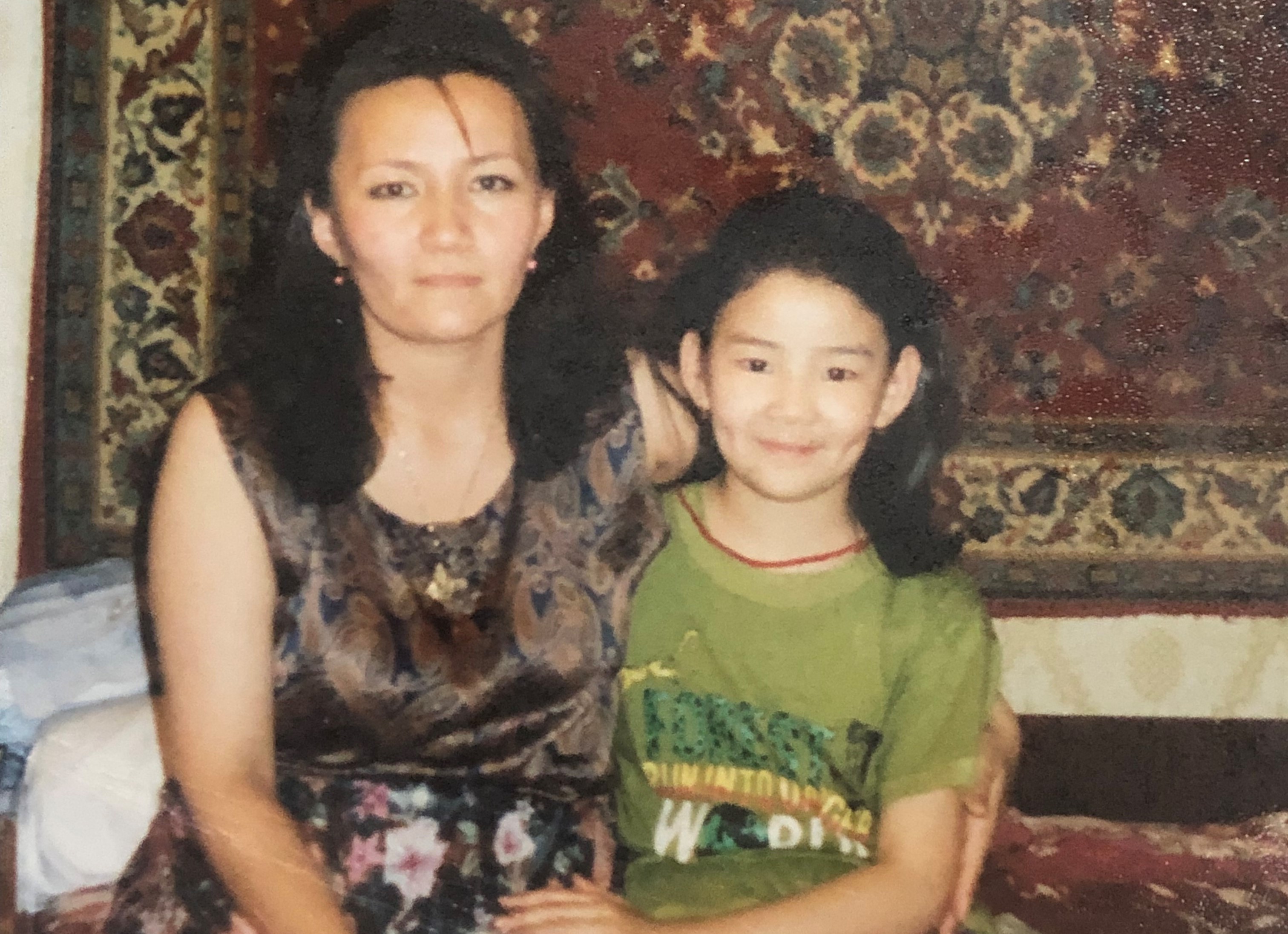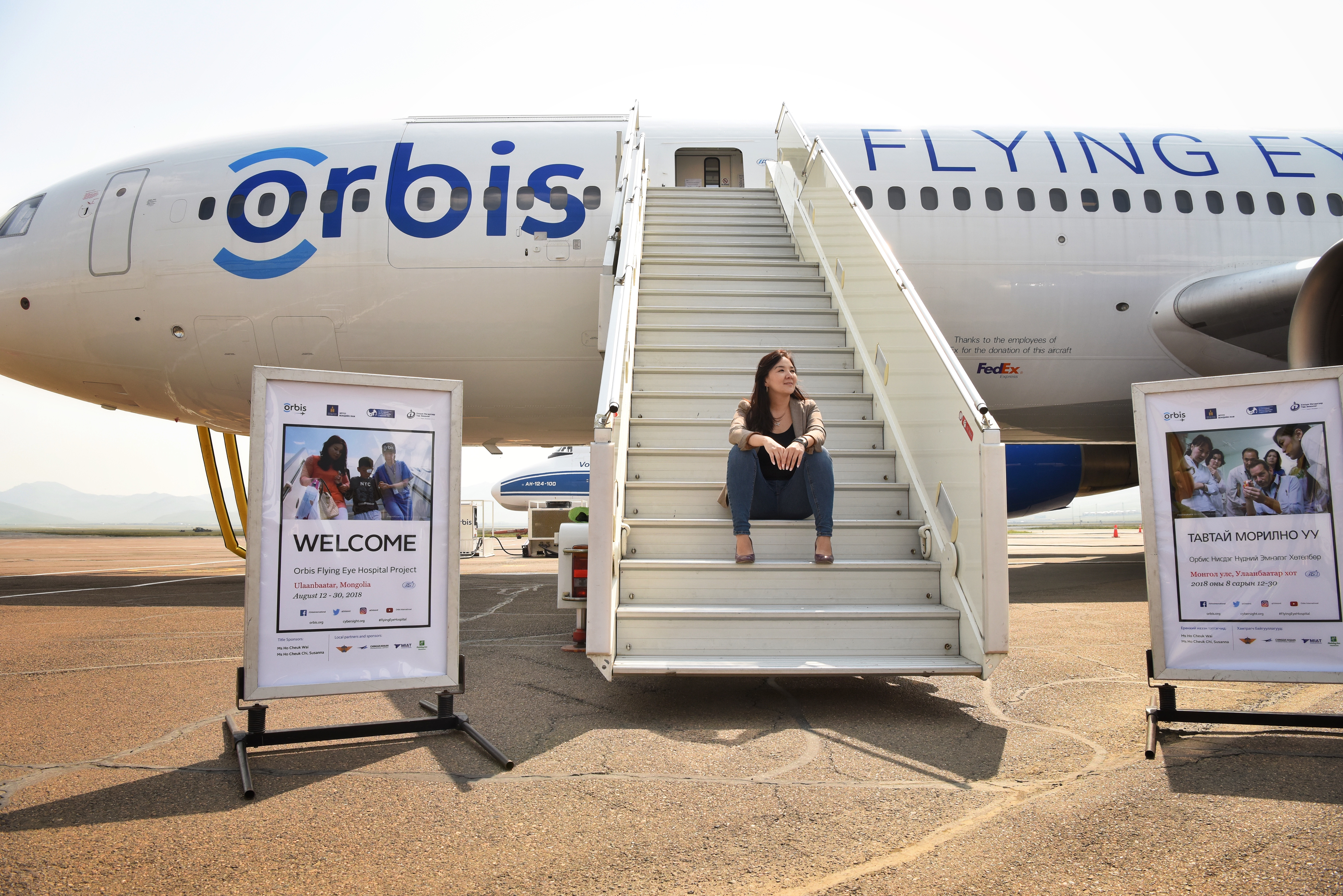When I was just 10 years old and living in Mongolia, I survived a terrible car accident that took the lives of my grandmother and my great-grandmother.
That accident also damaged my tear ducts, and local Mongolian doctors were not trained on the surgery I needed to treat my condition. Instead, every other day after school for a year, I would have a needle inserted into my eye to clean out the ducts. Without this painful routine, I could not see well enough to study or enjoy my childhood. It also shook my confidence – I worried that I would never be able to see the natural beauty of my home country, read a textbook or see the smiles on the faces of family and friends when something delightful occurred.
I wasn’t alone. In fact, globally, 1.1 billion people live with vision loss, and 90% of this is avoidable. Of the people suffering from vision loss, 55% of people are women and girls. There are many reasons why women and girls are more affected – namely cost, the ability to travel, and lack of access to information about treatment.

From the moment one wakes up until they go to sleep at night, eyesight plays a crucial role in work, leisure and family time. It’s something that can also be taken for granted by those who have never faced vision loss, which can be scary and life-altering, especially when it’s sudden and at such a young age – like it was for me.
In 1998, I boarded Orbis International’s high-tech Flying Eye Hospital – a fully accredited ophthalmic teaching hospital on an airplane – and underwent a procedure to repair my tear ducts. Orbis trains, mentors, and inspires eye care professionals in places with the greatest need so they can save and restore vision in their communities. Local eye care professionals were able to observe my surgery, building the knowledge to provide the procedure to other patients in the future.
My vision and life improved so much that I caught up on my schooling and earned a spot at university abroad, graduating from Canada’s York University. I went on to start my own business and later changed careers, entering the technology sector. I have also volunteered as a translator on the Flying Eye Hospital when it returned to Mongolia in 2014 and 2018. So much has been possible for me because of my restored sight, and I want to give back to others.
Globally, there are 112 million more women than men living with vision loss, including blindness. Because literacy rates are lower for women than men around the world, women may not know about vision-saving treatment options. Men can also be prioritized over women when it comes to healthcare, and studies show that fewer women receive cataract surgery despite being more affected by the ailment than men. In some societies, women face disadvantages simply because they are women, leading to worse health outcomes. Women who have a disability sometimes face a double-burden of discrimination: one based on their gender and the other on their disability.
By increasing access to sight-saving treatment, Orbis is helping more women gain access to work and financial independence, and helping more girls pursue an education. But we cannot stop there. Increasing access to quality healthcare of all kinds for women and girls must be a global priority. If there is anything that the pandemic has underscored, it’s that women are the backbone of society. When more women work, local economies grow and thrive.
During the pandemic we have seen a mass exodus of women from the workplace due to our overwhelming responsibilities, which is why empowering the next generation and ensuring they have access to healthcare is paramount. It levels the playing field and makes educational opportunities and financial independence within reach for millions of women and girls around the globe.
I am working to pay it forward, and so can you. Donate or volunteer with a favored nonprofit working to increase gender equality. Research and learn about the continued barriers we face as well as the efforts across the world to increase access to healthcare for women and girls. Engage with others. Have a dialogue and share your stories.
One story that is close to me is the story of Marla, an adorable little girl who is also from Mongolia. She was born with congenital cataracts – a clouding of the eye’s natural lens that can leave a child blind. She recently became the youngest person in Mongolia to receive cataract surgery. If she hadn’t received surgery at an Orbis partner hospital in Mongolia, she would have suffered permanent vision loss.
Now, Marla is just one member of the generations of children who can grow up to lead independent lives with healthy sight through the support of local hospitals and trained eye care professionals. Marla’s story highlights how far we’ve come to increase access to healthcare for women and girls and decrease the incidence of avoidable blindness.
I have also recently learned about a Mongolian doctor who led a webinar for eye care professionals around the globe on the very eye condition that I needed treatment for when I was a little girl. The fact that we’ve gone from someone like myself not being able to get the surgery I needed to Mongolian doctors training others globally on this procedure is a huge accomplishment – and helps us get closer to a world where little girls like myself or Marla can easily get the eye care we need and reach our potential.
We’ve come a long way since I was a young girl, but we still have a long way to go. I hope you’ll join me in the fight to beat avoidable blindness.

Bulgan Orgilsaikhan is a volunteer for Orbis International and a member of the Board of Directors for Orbis Canada.

